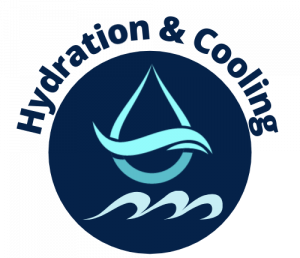Looking for effective heat acclimation protocols for football training camps? Discover science-backed strategies to keep players safe and performing at their best during hot weather conditions.
_______________________________
Heat Acclimation Protocols for Football Training Camps
With summer temperatures climbing and two-a-days still a reality for many football programs, proper heat acclimation isn’t just about performance—it’s about player safety. Every year, heat-related illnesses affect football players across the country, with some cases proving fatal. The good news? A well-designed heat acclimation protocol can dramatically reduce these risks while helping your team adapt to challenging conditions. Let’s explore what science tells us about safely preparing football players for the demands of hot-weather training. Implementing effective heat illness prevention strategies is crucial for coaches and trainers to protect their athletes. This includes educating players on the symptoms of heat exhaustion and heat stroke, as well as encouraging regular hydration and acclimatization. By prioritizing these measures, programs can ensure that players not only perform well but also remain safe in extreme conditions.
Understanding Heat Acclimation: What Happens to the Body
Heat acclimation is the process through which the body adjusts to exercise in hot environments. When done correctly, players experience several physiological changes that improve performance and safety:
Earlier sweating response means the body starts cooling sooner when temperatures rise. Blood plasma volume increases, improving cardiovascular efficiency and reducing heart rate during exertion. Core body temperature decreases during both rest and exercise. Sweat becomes more dilute, preserving electrolytes crucial for muscle function.
These adaptations don’t happen overnight—they require a systematic approach that gives players’ bodies time to adjust safely. Without proper acclimation, players face increased risks of heat cramps, heat exhaustion, and potentially life-threatening heat stroke.
Science-Backed Acclimation Timeline for Football Camps
Research supports a gradual 7-14 day acclimation period for optimal results. This timeline represents a middle ground between the NCAA’s minimum 5-day requirement and the more comprehensive approaches used by elite programs. Here’s what an evidence-based protocol looks like:
Days 1-5: Initial Adaptation Phase
Start with reduced equipment—shorts, t-shirts, and helmets only—for the first 2-3 days. Keep practice sessions under 2 hours with work-to-rest ratios of 1:3 (for every 15 minutes of activity, provide 45 minutes of rest/hydration). Gradually introduce shoulder pads on days 3-5 while maintaining generous rest periods. Monitor weight before and after practice—players should not lose more than 2% of body weight in a single session.
Days 6-10: Progressive Loading Phase
Introduce full pads while continuing to limit practice duration and intensity. Work-to-rest ratios can be adjusted to 1:2 as players adapt. Schedule the most demanding activities during cooler morning hours when possible. Continue individualized hydration plans based on sweat rate measurements.
Days 11-14: Full Integration Phase
By this point, most players should have developed significant heat tolerance. Full-length practices can be conducted, though smart coaches still provide adequate hydration breaks. Continue monitoring players for signs of heat stress, especially those who have shown sensitivity in earlier phases.
Customizing Protocols Based on Climate and Team Factors
The approach above provides a framework, but smart coaches adjust based on several factors:
Geographic location and typical climate conditions matter greatly—teams in the Southeast face different challenges than those in the Northwest. Player demographics including age, fitness levels, and prior heat exposure history should influence protocol design. Facility resources like access to air-conditioned spaces, ice baths, and shade structures affect recovery options. Practice scheduling flexibility allows for avoiding the hottest parts of the day when possible.
Even within a team, individual monitoring remains crucial. Players who arrive to camp from cooler climates often need more gradual adaptation than those already living in hot regions.
Hydration: The Foundation of Heat Safety
No acclimation protocol succeeds without proper hydration strategies. Research consistently shows that even mild dehydration (1-2% body weight loss) impairs performance and increases heat illness risk. Effective hydration requires:
Pre-hydration protocols starting 24 hours before intense practices. Scheduled hydration breaks every 15-20 minutes during practice. Post-practice rehydration monitored through weight checks (players should consume 16-24oz for every pound lost). Electrolyte replacement for longer practices, especially as sweat rates increase during acclimation.
Having proper hydration equipment available is non-negotiable. Mobile hydration stations that can serve multiple players simultaneously make compliance much easier than relying on individual water bottles.
The Essential Role of Cooling Zones
Strategic cooling stations represent another crucial component of heat safety. Dedicated areas with misting fans, shade structures, and ice towels allow players to effectively lower core temperatures during breaks. For programs with higher budgets, immersion tubs remain the gold standard for treating potential heat illness and providing relief during extreme conditions.
Ready to Protect Your Players from Heat-Related Risks?
At Hydration and Cooling, we provide the equipment you need to implement these protocols safely. From our 35-100 gallon Team Water Tankers that serve multiple players simultaneously to our high-powered misting fans that can drop ambient temperatures by up to 30°F, we’ve got your team covered.
Questions about the right cooling solution for your program? Call us at 828-820-8600 Monday-Friday 10am-7pm EST, or explore our complete lineup of hydration solutions.
When Life Gets Hot • We Do Cool!
